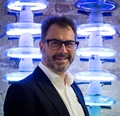Celestial Navigation and Time
William Bottaci
For our “George Daniels Lecture” we are pleased to welcome William Bottaci from the Croydon Astronomical Society.
We use time to plan, and also not to miss events. It can also be used for another important purpose, navigation.
There is a natural rhythm to our time, from the rotation of our planet and its journey around the Sun, which not only causes events but indicates them. This natural indication, mostly seen as the path (placement) of the Sun across the sky, can actually be used in reverse, to indicate where on Earth it is being observed; basically, if we know the time we know the place.
For practical purposes we require a refinement, and the Sun can only be used at specific moments, sunrise, sunset, and when highest in the sky. It stands to reason that the more ‘suns’ there are the more opportunities, and this brings us to the Moon, and the stars. The refinement extends to know just where the stars are, and when – we need both items of information – because the better we know these the more accurate our location. It only remains to have knowledge of this process, and a means to implement it. Welcome to Celestial Navigation and Time.
William became interested in astronomy just before secondary education, and its associated subjects of photography, navigation and time. Whilst large and expensive equipment was financially and technically out of reach it seemed that celestial navigation is something that is both understandable and feasible, hence the adopted interest as something immediately accessible.













